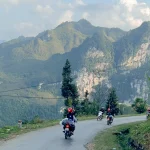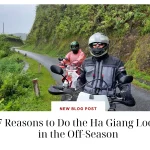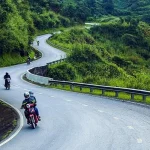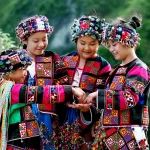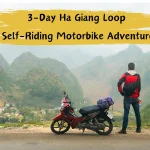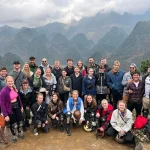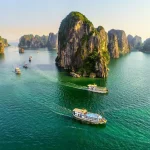Trekking in Sapa offers an unparalleled adventure in Vietnam’s northern highlands. This place is renowned for its stunning landscapes, diverse ethnic cultures, and lush rice terraces. Sapa provides trekkers with an exceptional opportunity to explore nature and immerse themselves in local traditions. Whether you’re an experienced hiker or a casual wanderer, in this article Karst Plateau will help you discover the best hiking trails in Sapa and provide essential tips to make your trip memorable.
1. Why Trekking in Sapa?
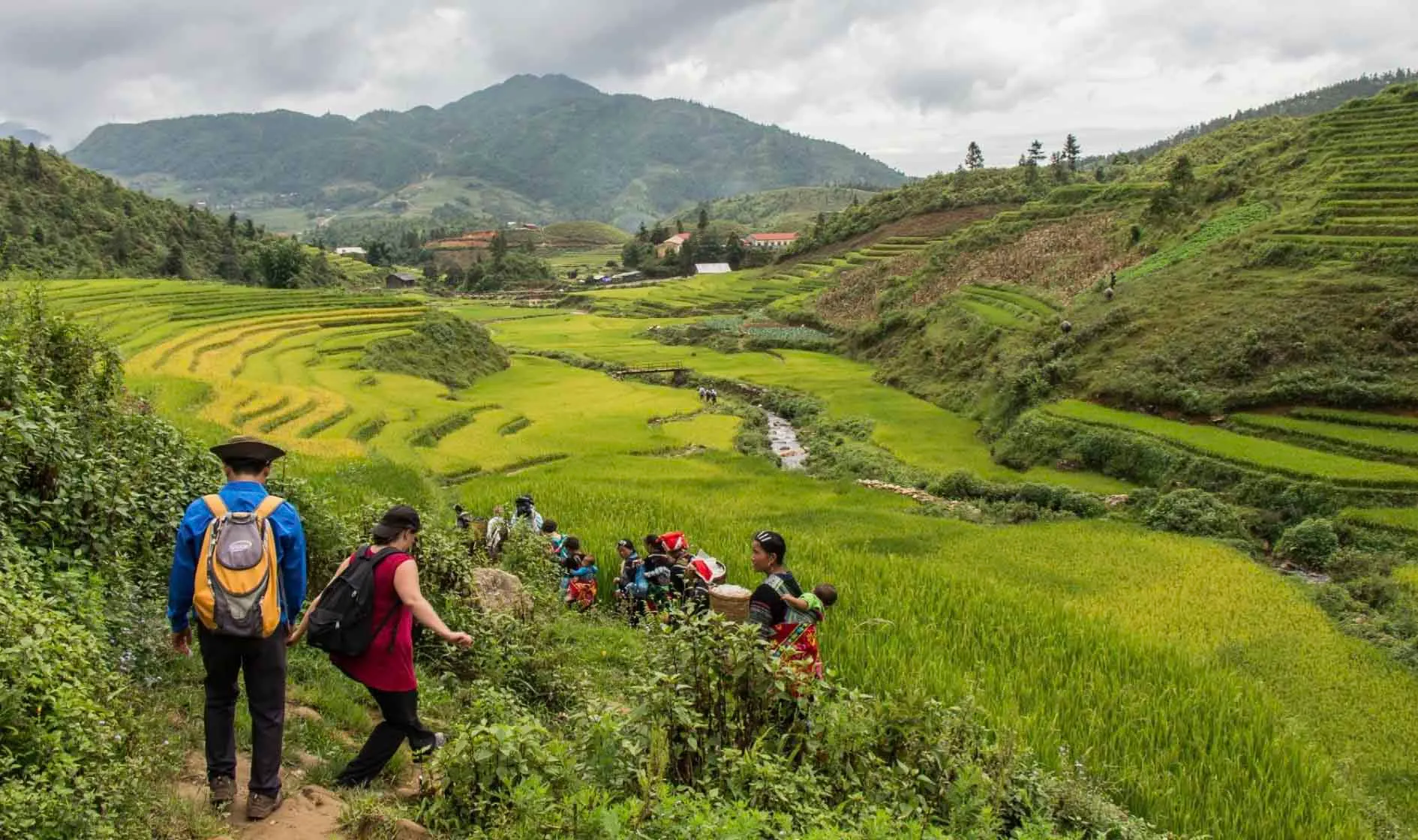
Sapa is celebrated for its dramatic scenery and rich cultural heritage
Sapa, located in the Lao Cai Province of Vietnam, is celebrated for its dramatic scenery and rich cultural heritage. Nestled in the Hoang Lien Son mountain range, it boasts a temperate climate that contrasts with the tropical heat found elsewhere in Vietnam.
Trekking in Sapa allows you to traverse breathtaking landscapes, from terraced rice fields and verdant valleys to towering mountain peaks. Along the way, you’ll encounter traditional villages, meet friendly locals, and gain insights into their unique way of life.
2. Best Times to Trek in Sapa
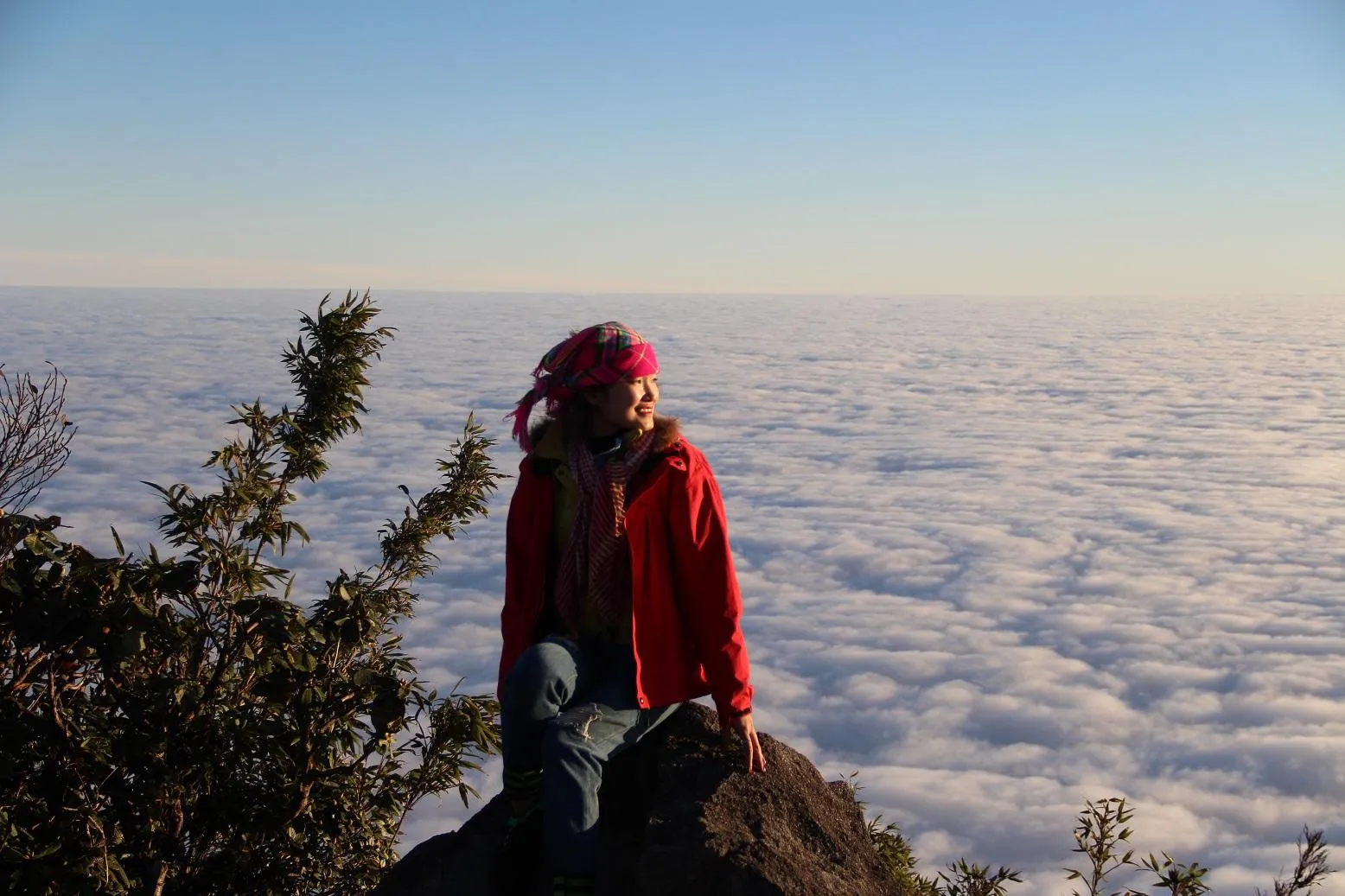
Each season brings unique charms, making trekking in Sapa a year-round destination for trekkers
2.1 Spring: March to May
2.2 Summer: June to August
Summer in Sapa sees a rise in temperatures, reaching highs of around 25-30°C (77-86°F), and marks the beginning of the rainy season. While the rainfall can be heavier, it doesn’t necessarily deter trekkers; instead, it transforms the landscape into a rich tapestry of greens. The trails offer a different experience with exotic flora and fauna thriving in the moist environment.
Moreover, summer is also a time of significant cultural activity. Local communities often engage in traditional festivals that celebrate the rice harvest, providing visitors an opportunity to participate in age-old rituals filled with singing, dancing, and homemade food.
2.3 Autumn: September to November
As autumn approaches, the cool, crisp weather entices trekkers back to Sapa. From September to November, daytime temperatures average around 18-22°C (64-72°F), creating the perfect conditions for trekking in Sapa. This season is marked by the iconic golden hue of ripened rice terraces, which create a picturesque backdrop for treks.
2.4 Winter: December to February
Winter in Sapa can be a captivating time for trekking in Sapa, albeit with a different set of challenges. The temperatures can dip to between 5-10°C (41-50°F) and might even see the occasional snowfall on higher peaks. While this might dissuade some trekkers, those who embrace the chill will find they have the trails to themselves, enjoying the serene beauty of the snow-capped mountains and frosty landscapes. This unique season offers a quieter and more solitary trekking experience in Sapa, making it a special time for those seeking solitude amidst the beauty of trekking in Sapa.
3. Popular Trekking Trails in Sapa
Sapa’s enchanting landscapes offer a wide array of trekking in Sapa trails that vary in difficulty and scenic value. Whether you’re a novice or an experienced hiker, the region boasts trails that cater to every skill level while promising stunning views and cultural richness.
3.1 Fansipan Mountain: The Roof of Indochina
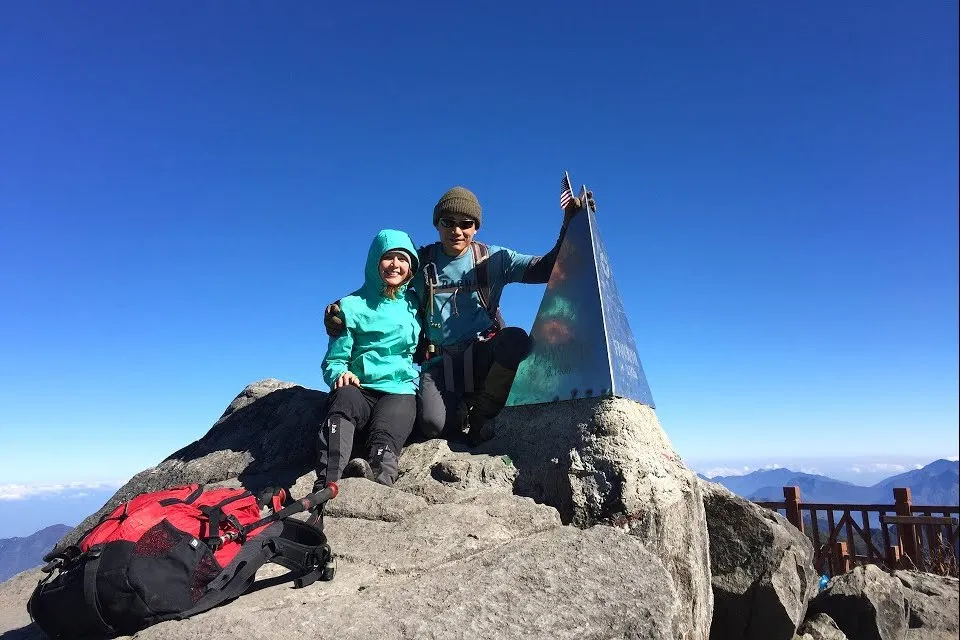
Trekking Fansipan is a remarkable adventure that combines physical challenge with stunning natural beauty
Fansipan Mountain, standing at a towering height of 3,143 meters (10,312 feet), is the highest peak in Vietnam and all of Indochina. It’s a bucket-list destination for many trekkers who seek to conquer its steep paths. There are a variety of routes to reach the summit, each offering unique challenges and breathtaking landscapes.
The Tram Ton Trail is often considered the most approachable route, involving a gentle ascent through verdant forests, with an ascent duration of about 6-7 hours, leading to the first campsite situated at an altitude of 2,200 meters. This route rewards trekkers with refreshing views of terraced fields and waterfalls along the way, making it ideal for moderate fitness levels.
Those searching for more adventure can opt for the Sin Chai Trail. This route features steeper climbs and varied landscapes that will challenge even seasoned trekkers.
Lastly, the Cat Cat Trail is the most demanding yet also the most rewarding. This 3-day trek begins at the picturesque Cat Cat Village and winds its way through lush jungles and dramatic landscapes, leading to the summit.
3.2 Lao Chai and Ta Van Villages Trek
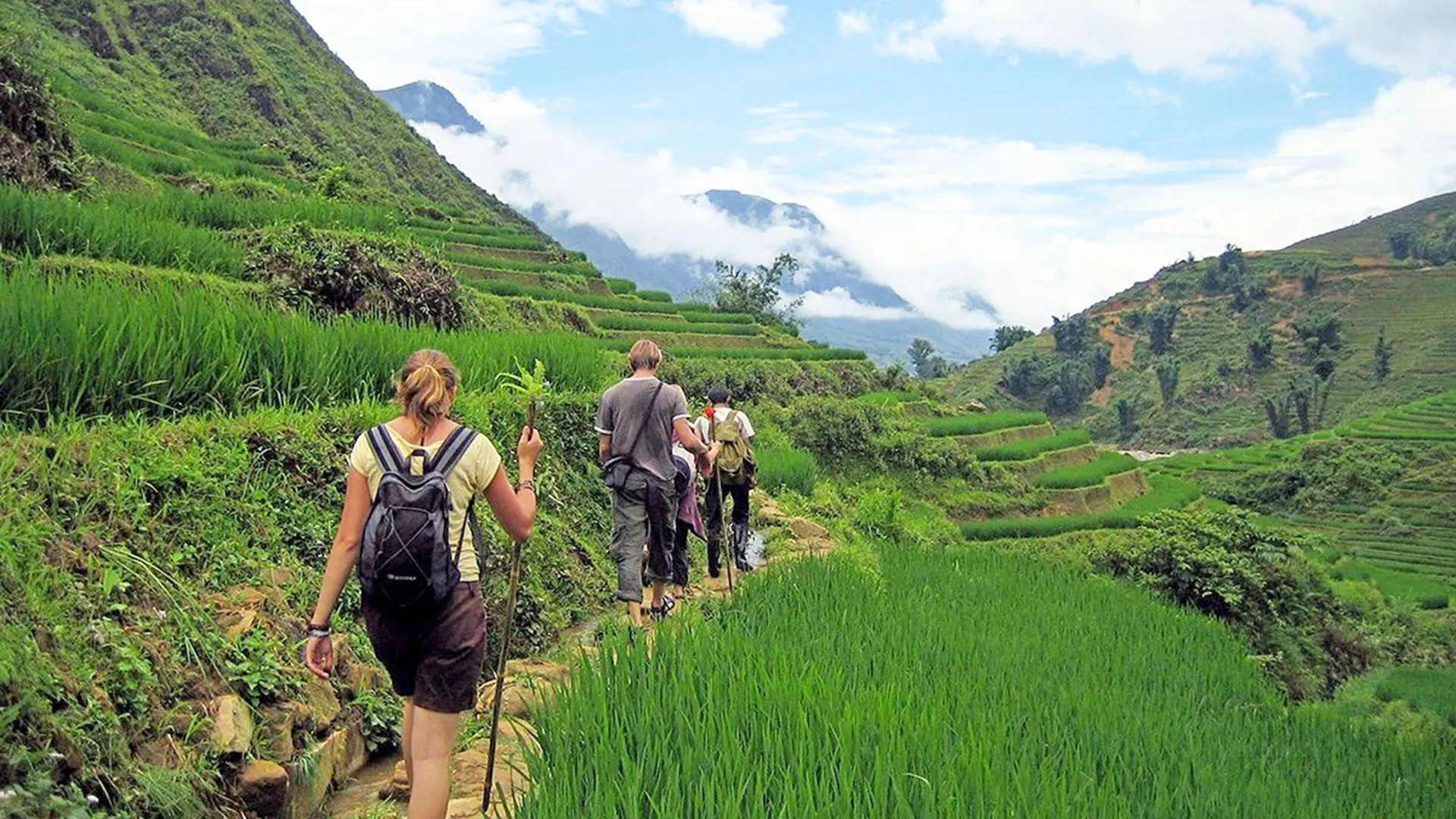
The allure of the Lao Chai and Ta Van trek lies in its blend of natural beauty and cultural exposure
The Lao Chai and Ta Van Villages trek presents a moderate trekking option that showcases the extraordinary beauty of the Muong Hoa Valley. This trek, with distances ranging from 6-8 kilometers, provides a deep dive into Sapa’s rich culture.
The trail ambles through an ever-changing landscape of terraced rice paddies, idyllic streams, and the dramatic backdrop of Hoang Lien Son mountains.
The trek usually takes about one day, making it ideal for families or newcomers to trekking in Sapa who seek an enriching experience without overwhelming difficulty.
3.3 Sa Seng – Hang Da – Hau Thao Villages Trek
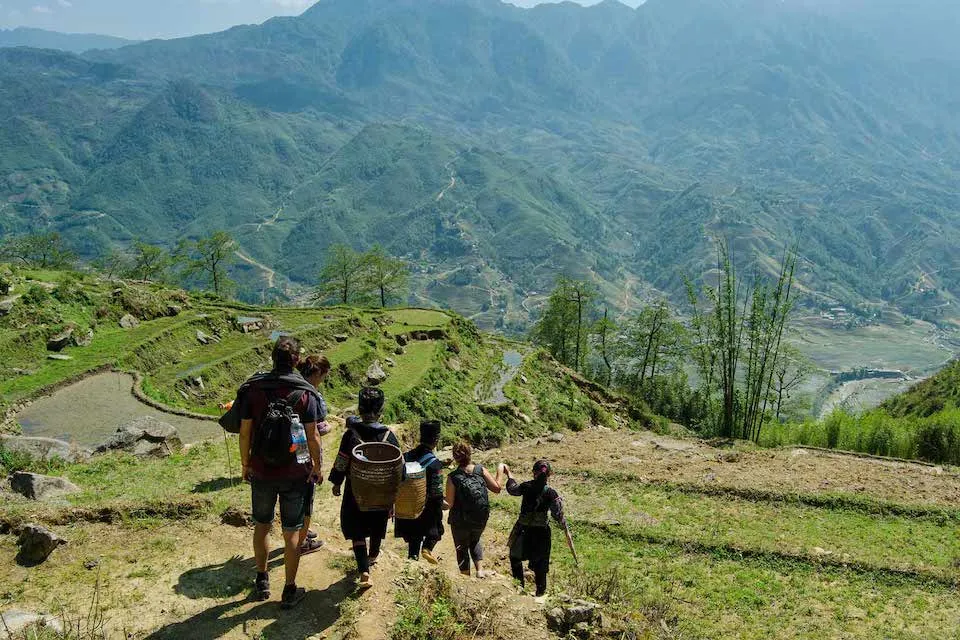
This trek is perfect for those seeking authentic cultural interactions and a deeper understanding of the local way of life
This moderate trek takes you through an essential historical context as it leads you to the remote villages of Sa Seng, Hang Da, and Hau Thao, predominantly inhabited by the Red Dao ethnic minority. Covering distances between 12-15 kilometers, the trek is moderately challenging and takes you through picturesque mountain landscapes and winding trails.
As you encounter traditional Red Dao houses dotted throughout the area, you’ll have the chance to learn about their unique practices, such as medicinal herbal baths and intricate embroidery techniques.
The terrain can fluctuate, with sections that may challenge even seasoned trekkers. However, the stunning mountain views and experiences around every corner ensure that trekkers remain motivated and engaged throughout the day. This trek is perfect for those seeking authentic cultural interactions and a deeper understanding of the local way of life.
3.4 Ta Phin Village Trek
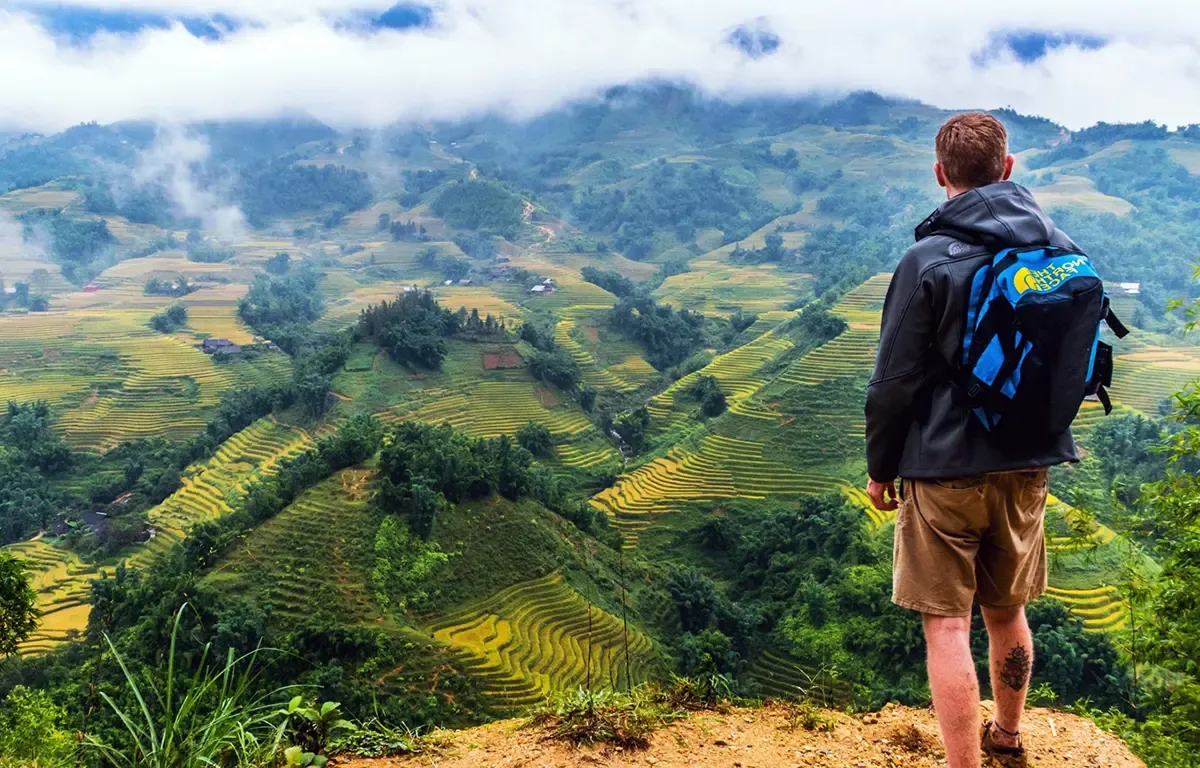
The Ta Phin trek offers everything from natural beauty to rich cultural experiences
Relatively easy and suited for all skill levels, the Ta Phin Village trek allows for a peaceful exploration of the region. The trail traverses through lush forests and gentle inclines leading to Ta Phin Village, which is famous for its hot springs and the captivating lifestyle of the Red Dao people.
The trek presents an opportunity to not only appreciate the natural beauty but also visit the Ta Phin Monastery, an important spiritual site for the local community. The gentle ascent through rice terraces with stunning views of the surrounding landscapes makes it ideal for families or those who prefer a less physically demanding trek.
See More: Explore Ta Phin Sapa village – the ideal place to stop for a brilliant summer
4. Essential Gear for Trekking in Sapa
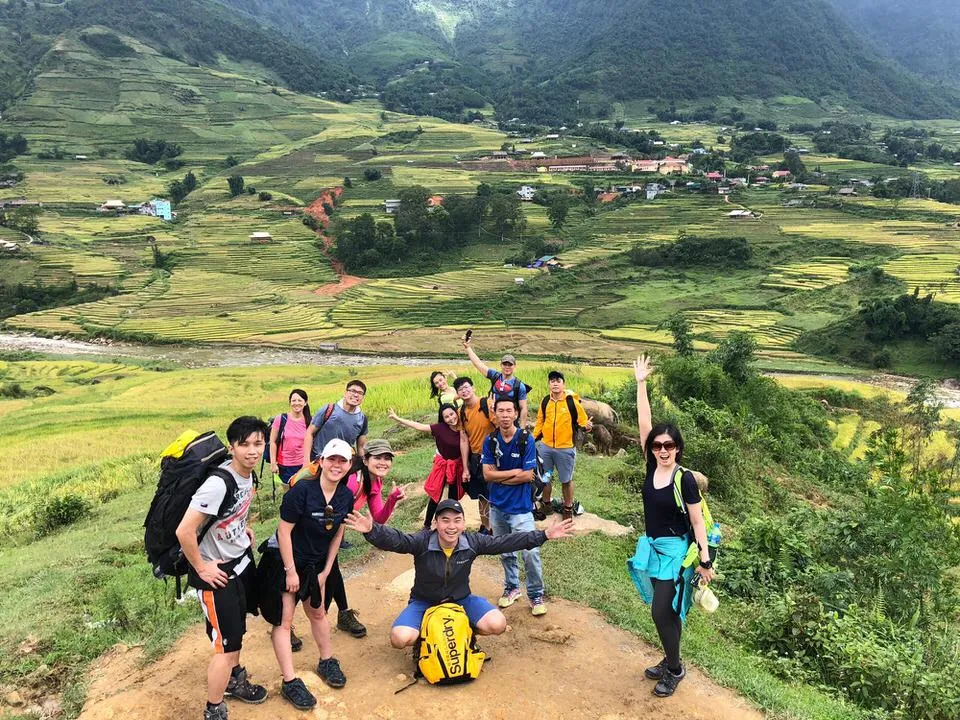
Having the right gear is crucial for a successful trekking experience in Sapa
4.1 Footwear: Choosing the Right Hiking Shoes
Investing in a good pair of hiking shoes is essential for trekkers. It is vital to select shoes that provide adequate ankle support and traction. Recommended options include:
- Keen Targhee or Merrell Moab: Both footwear options are well-regarded among hikers for comfort and durability.
Alongside proper shoes, wearing moisture-wicking hiking socks (such as wool or synthetic blends) can prevent blisters and keep your feet comfortable. It’s also crucial to break in your shoes prior to the trek to ensure a perfect fit and avoid discomfort.
4.2 Clothing: Dressing for Sapa’s Climate
Layering is crucial when dressing for Sapa’s fluctuating temperatures. Essential clothing includes:
- Moisture-wicking base layers: Keep you dry by pulling sweat away from your skin.
- Lightweight, waterproof jackets: In case of unexpected rain, it’s vital to carry a good-quality jacket.
- Sturdy, closed-toe hiking pants or leggings: Protect against scratches and provide comfort while trekking.
Additional accessories such as hats, sunglasses, and gloves can also enhance comfort during various weather scenarios.
4.3 Backpack: What to Pack and Carry
Choosing an appropriate backpack is vital for carrying the essentials.
- Osprey Talon 22: This is a popular choice for day hikes.
- Rain cover: Protect your bag and gear from moisture during wet conditions.
Consider bringing hiking poles for extra support and stability while traversing rocky terrains. Each daypack should include essential items like water, snacks, and a lightweight first-aid kit.
4.4 Food and Hydration Essentials
Staying hydrated and energized is crucial during your Sapa trek. Carry enough water at least 1.5 liters per person per day. High-energy snacks, such as energy bars, nuts, and dried fruit, will keep you fueled.
Local prices are affordable: bottled water, coffee, and soft drinks typically cost around 20,000 VND, making it convenient to replenish supplies during your trek.
4.5 First Aid and Safety Equipment
Bringing a basic first-aid kit is crucial when trekking in remote areas. Essentials should include:
- Bandages, antiseptic wipes, and any personal medications
- Insect repellent and sunscreen to protect against UV rays and insect bites
- A whistle and flashlight in case of emergencies
Carrying a portable phone charger can also be beneficial to keep communication open while on the trails.
5. Planning Your Trekking Itinerary
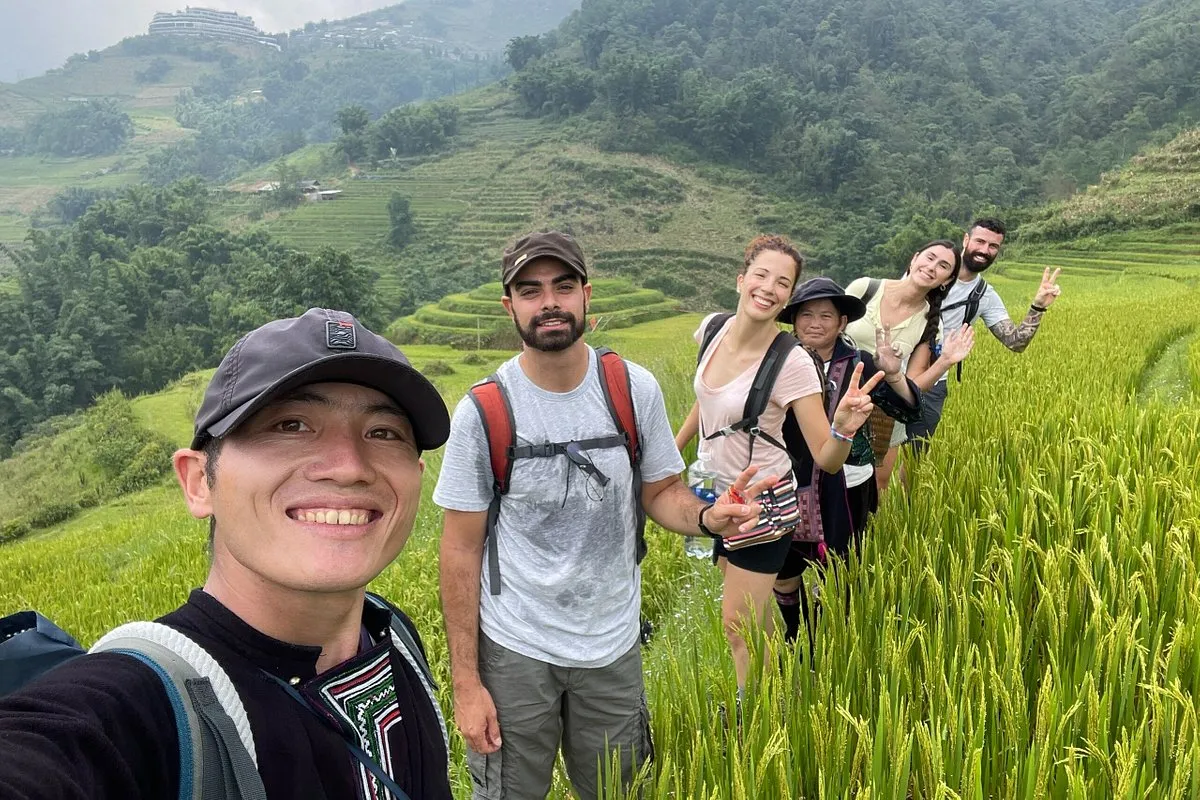
Planning a well-structured trekking itinerary is crucial for making the most of your adventure in Sapa
Crafting a well-thought-out itinerary can considerably enrich your trekking in Sapa experience, ensuring that you make the most of your time in this captivating region.
5.1 Duration of Treks: Day Hikes vs. Multi-Day Treks
Sapa boasts both day hikes and multi-day trekking options catering to different preferences:
Day Hikes: Short treks such as the Cat Cat Village Trek are half-day excursions allowing for immersive experiences without prolonged commitment.
Multi-Day Treks: Longer treks like the Y Linh Ho – Lao Chai – Ta Van Trek span several days, offering travelers a chance to delve deeper into the local culture and landscapes.
Combining shorter hikes with multi-day options gives trekkers the chance to customize their adventure according to time constraints and personal interests.
5.2 Guided Tours vs. Self-Guided Treks
Selecting between guided tours and self-guided treks is a crucial decision.
– Trekking with a local guide can significantly enhance your experience: Guides bring essential knowledge of the trails, ensuring that you’re navigating safely and discovering culturally significant landmarks.
– Self-guided trekking allows for more freedom but it can present risks, such as navigating without local insights or encountering language barriers.
For those unfamiliar with the area, a guided tour is highly recommended, offering expert advice and cultural depth that enrich your journey.
5.3 Recommended Accommodation: Homestays and Hotels
When planning your trekking in Sapa, consider the type of accommodation that suits you best.
Homestays: Staying with local families during multi-day treks enriches the experience through authentic cultural interactions and local cuisine.
Hotels: In Sapa town, numerous hotels offer Western comforts for those undertaking shorter treks.
Each accommodation option presents unique benefits, allowing trekkers to choose between intimate local experiences and the familiarity of hotels.
5.4 Transportation Options to and from Sapa
Reaching Sapa involves various transportation methods:
Train: Overnight trains from Hanoi to Lao Cai provide a scenic journey. Shuttle buses or taxis then transport travelers to Sapa town.
Bus: Buses from Hanoi to Sapa take about 5-6 hours, offering a convenient route for those pressed for time.
Understanding travel options ensures a smoother start to your trekking adventure.
5.5 Itinerary Suggestions for Different Trek Durations
3-Day Trek: The Y Linh Ho – Lao Chai – Ta Van trek combines cultural immersion with breathtaking scenery.
1-Day Hike: The Cat Cat Village trek offers a compact experience showcasing local culture and stunning environments.
Challenging 2-3 Day Trek: The Fansipan trek beckons adventurers seeking the pinnacle of Indochina’s peaks.
Constructing a well-rounded itinerary can allow trekkers to experience Sapa in versatile ways that meet their desires and time constraints.
6. Final Tips for a Successful Trek
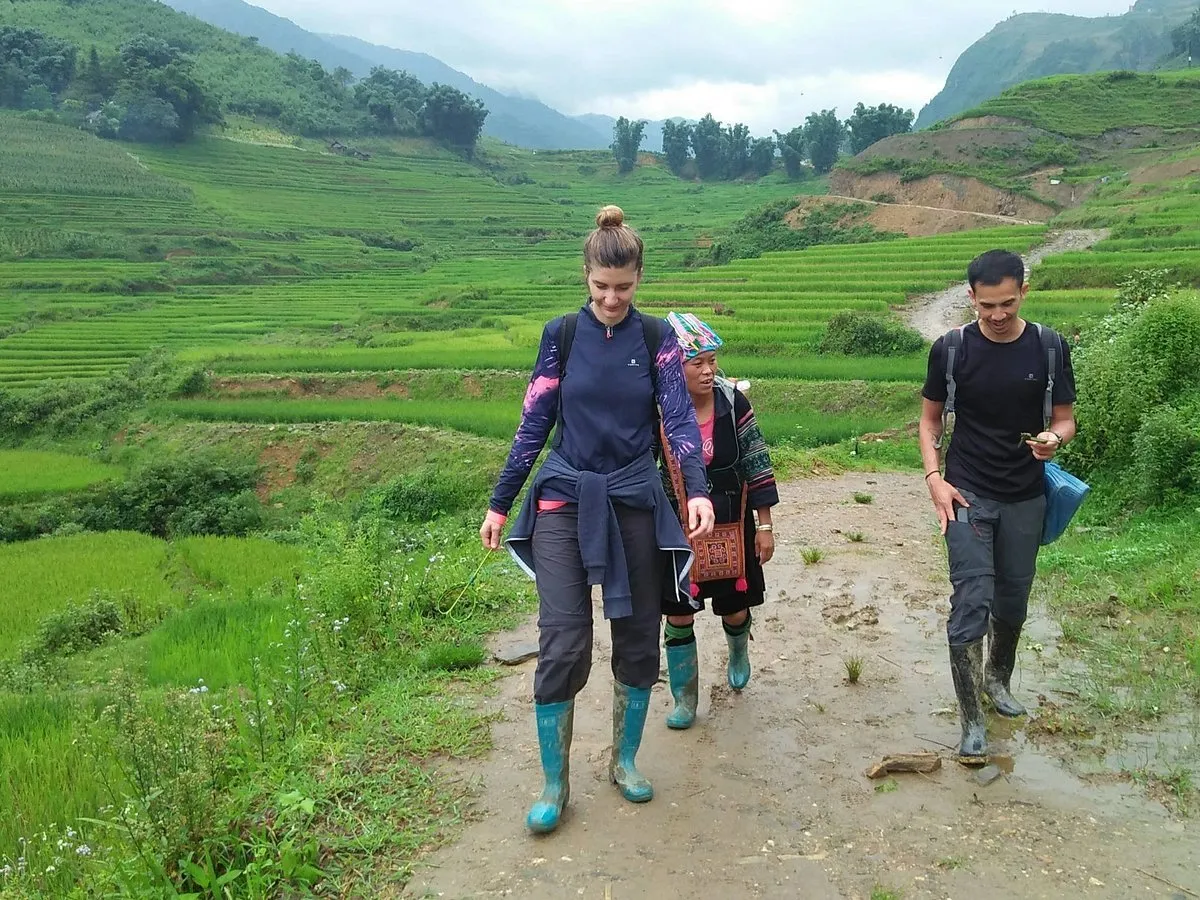
To ensure a successful adventure, it’s essential to remain flexible and open-minded throughout your journey
Trekking in Sapa invites travelers to experience breathtaking natural landscapes and rich local cultures. To ensure a successful adventure, it’s essential to remain flexible and open-minded throughout your journey.
6.1 Preparing for Unexpected Weather Changes
As Sapa is known for unpredictable weather, it’s wise to:
Pack extra layers of warm, breathable clothing for fluctuating temperatures.
Carry a high-quality rain jacket and backpack cover.
Monitor weather forecasts for real-time updates, adjusting the itinerary as needed.
Flexibility in response to weather conditions can greatly enhance safety and comfort, allowing for more enjoyable trekking in Sapa experience.
6.2 Building Physical Endurance Before Your Trek
Proper preparation ahead of your trek is vital. To build physical endurance:
Establish a regular fitness regimen focusing on cardiovascular and strength training.
Gradually increase the duration and intensity of your workouts to build stamina and enjoy a more rewarding trekking experience.
Integrate flexibility exercises to enhance stability and minimize injury risks.
Being in good shape will contribute to a more comfortable, enjoyable trek while allowing you to fully appreciate Sapa’s extraordinary beauty.
6.3 Navigational Aids: Maps and Guides
Having navigational tools is essential for a safe and secure trek:
Acquire a detailed trekking map of Sapa, learning how to interpret its features effectively.
Carry a GPS device or a reliable smartphone with GPS capabilities.
Familiarize yourself with the map and any guides prior to your trek to reduce the risk of getting lost.
Proper navigation is crucial in unfamiliar terrain, transforming your trek into a smooth journey.
Trekking in Sapa offers a unique and unforgettable adventure through one of Vietnam’s most stunning regions. With its diverse trails, rich cultural experiences, and breathtaking landscapes, Sapa is a trekker’s paradise. By following these tips and exploring the top trails, you’ll be well-prepared to embark on a memorable journey in this beautiful part of Vietnam.
Whether you’re seeking challenging hikes, cultural encounters, or scenic beauty, trekking in Sapa has something for everyone. Plan your trek, respect local customs, and embrace the adventure—Sapa awaits! For more information on trekking and to plan your journey, visit the website Karst Plateau.

